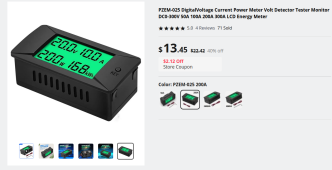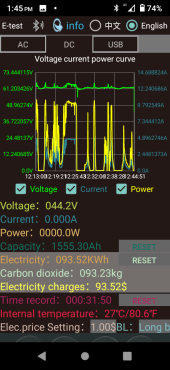Been using these din rail power meters on my AIO's AC out to keep track of things. With all the information it always displays I do not have to cycle through the AIO's screens, run an app, log on to a PC or anything more than a glance. I went with the type that has the coil sensor rather than running a wire through the body of the meter as that seemed a better choice. There is some question if the power reading is apparent or real power but for my general use it does not matter. I like glancing at it when I have several loads up and seeing if I am within the AIO's safety margins. Bit like having a Kill-A-Watt-meter always connected.
I bought mine of Aliexpress but it can be found at Amazon and probably elsewhere. If you are just setting up your AIO you might consider putting in a din rail box (need a minimum of 2 slots) with clear face in a viewable location.

I bought mine of Aliexpress but it can be found at Amazon and probably elsewhere. If you are just setting up your AIO you might consider putting in a din rail box (need a minimum of 2 slots) with clear face in a viewable location.









